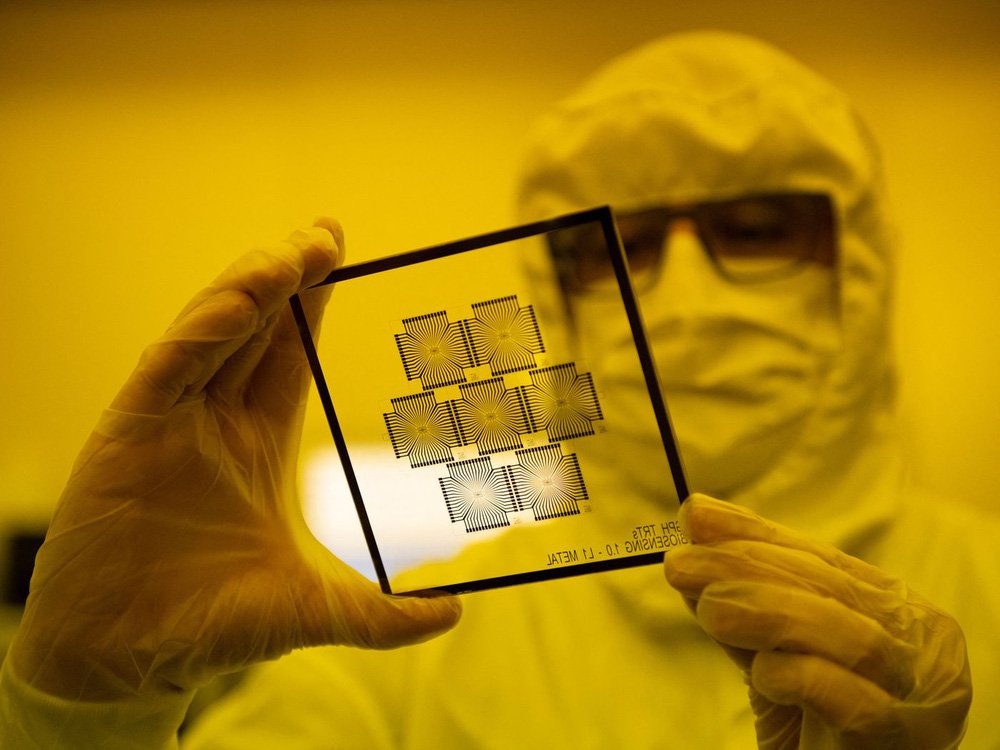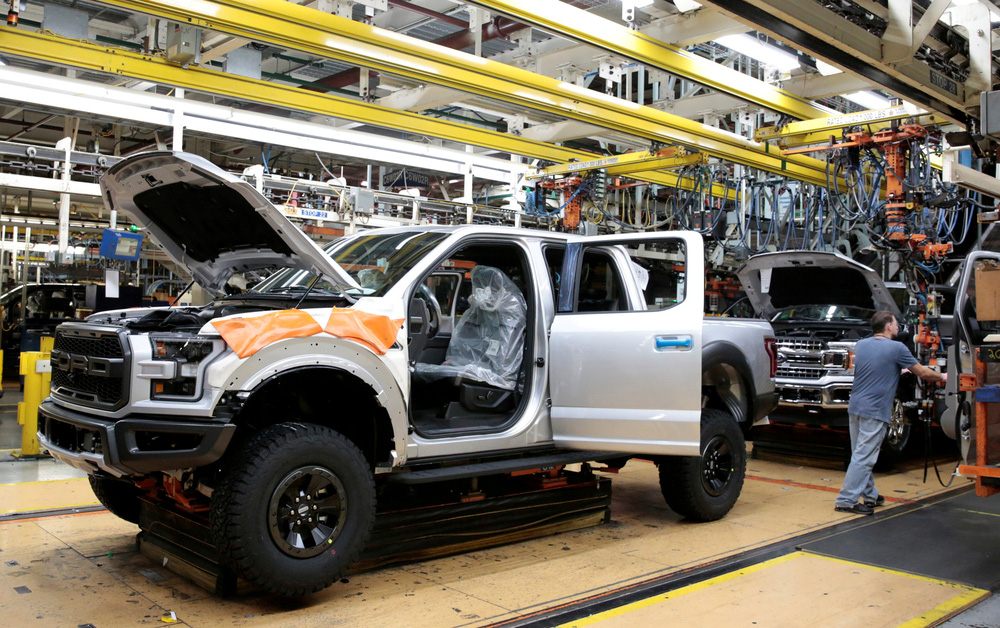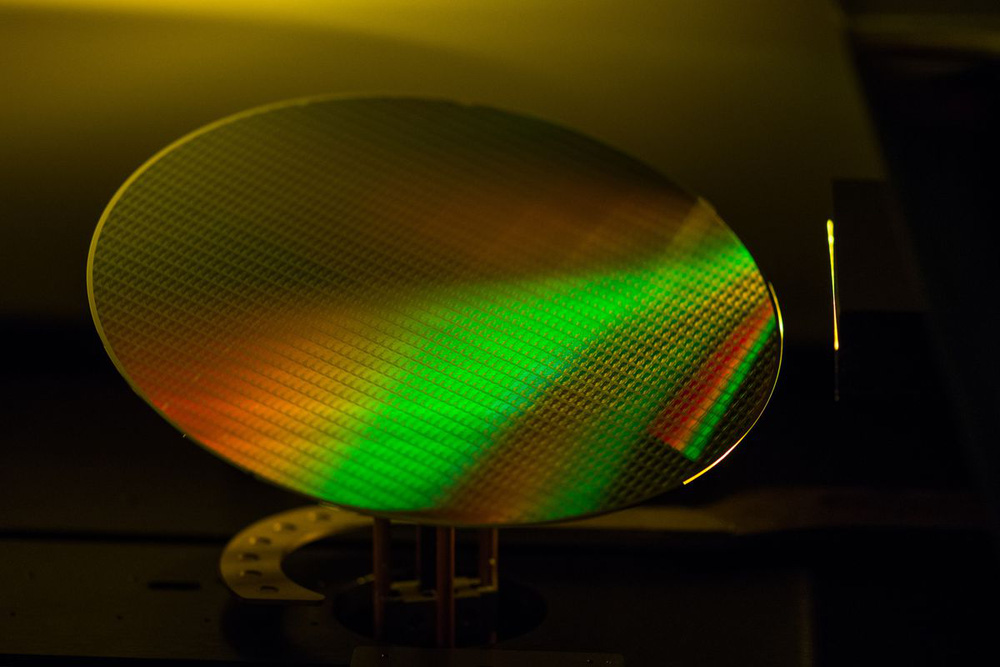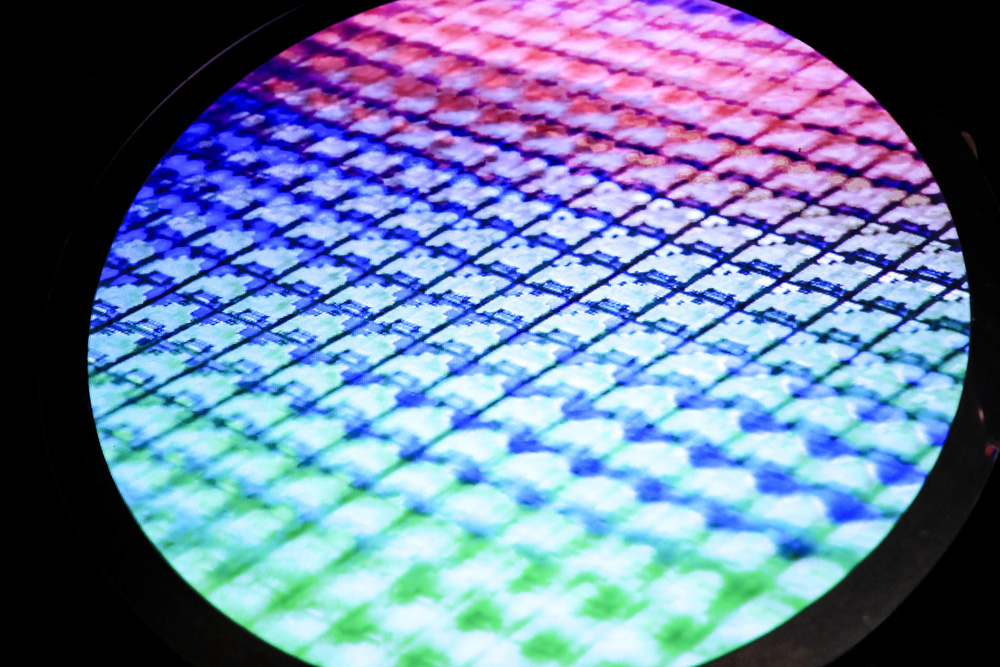2 Ukrainian companies that supply 54% of this globally must now be stopped: China suddenly meets with time
- Tram Ho
IMPORTANT LINK
The world car industry is currently facing a “great tribulation” since the Covid-19 epidemic broke out on a global scale, which is the problem of the supply of semiconductor chips – an important component for a device. electronic device or feature. In the near future, this problem will continue to get worse, possibly even affecting other electronic products such as smartphones and laptops.
Specifically, Ukraine’s two leading neon gas suppliers, Ingas and Cryoin, had to suspend operations due to the impact of the hot issue between Russia and Ukraine. According to information from Reuters, between 45% and 54% of neon gas used to produce semiconductor chips in the world comes from the two Ukrainian companies mentioned above.

Neon gas plays an important role in the semiconductor chip manufacturing process. Photo: Josep Lago/AFP via Getty Images
Absence of supply from Ukraine, dark clouds will cover many industries around the world. Semiconductor chip manufacturers depend on neon to control the laser beam, which in turn produces chips (explained in more detail below). At the moment, whether these manufacturers will have enough time to manage another supply of neon before their stockpiles empty remains a question mark.
These manufacturers and analysts around the world think they have about 1 to 6 months to go before they run out of things to produce. And if these manufacturers cannot produce chips, the semiconductor chip problem will continue to linger instead of ending next year according to some predictions. The lack of chips means rising costs, slow deliveries, and the lack of some crucial technology.

Ford had to remove the satellite navigation system from many cars, the reason was attributed to a shortage of semiconductor chips. Photo: REUTERS/Rebecca Cook/File Photo
Professor Unni Pillao, a lecturer in Nanoengineering (roughly translated from Nanoengineering) at Suny Polytechnic Institute, explains about this: “Whether it’s electronics, cars, computers, phones, airplanes or anything else. Everything you can think of has semiconductors. In the long run, if the problem isn’t solved then you may not have the opportunity to buy those things again.”
The dilemma of this semiconductor chip shortage is serving as a wake-up call, that the technology supply chain spans the world, across all kinds of companies/enterprises, and some of them are concentrated in one country. Companies that manufacture hardware like Apple, Samsung or Intel love this kind of centralization because when they buy a product from a specialized 3rd party for a product, it means they are benefiting in terms of costs. labor and assembly, but with a high level of efficiency.
After the problem between Russia and Ukraine occurred, this production line revealed a weakness, that just “a common cold sneeze” of a basic detail can make the whole world of technology. have trouble. Neon’s case is just the latest, but not necessarily the last.
WHAT IS NEON USED FOR?

Neon helps chip manufacturers use lasers more efficiently. Photo: Nathan Laine/Bloomberg via Getty Images
Chip manufacturers usually don’t make neon on their own. Of course, they can’t be without neon as neon helps them operate the ultra-small tolerance (i.e. ultra-precise) laser cutters that turn silicon (the key ingredient for making chips) into the microchips that make computers work. The laser plays an important role in what is roughly translated as lithography, after the silicon rods are cut into thin slices.
Manufacturers use lasers to create microscopic and detailed engravings on the glass, thereby starting the process of turning a piece of silicon into a chip. Since these chips are so small and messy, manufacturers need to precisely control the laser wavelength. This is where neon comes into play.

The air is a natural neon “mine”. Neon makes up about 0.0018% of the air. Photo: Britanica
Neon is actually not easy to produce. Manufacturers will use specialized separation technology to directly take this gas from the air, liquefying the air at supercooled temperatures to easily separate neon from other substances, such as nitrogen or oxygen. Since neon gas makes up only a tiny fraction of the air, only about 0.0018%, a lot of the air is “filtered” to produce enough neon for the semiconductor chip industry to need. The easiest way to get neon is to take advantage of machines that already use technology for a similar purpose, often steel mills from the Soviet era.
The above approach can get neon in its raw form, but chip manufacturers need pure neon, and that’s where two Ukrainian companies (Ingas and Cryoin) come in. Before the hot issue between Russia and Ukraine happened, Nikolay Avdzhy (senior person in the commercial department of Ingas) revealed to Reuters that Ingas produced about 15,000 to 20,000 cubic meters of neon a month, 75% of which is generated by neon. for chip manufacturing; Meanwhile, Laisa Bondarenko (Cryoin’s chief development officer) told Reuters that Cryoin produces between 10,000 and 15,000 cubic meters per month, without disclosing what percentage of that goes to the chip industry.
CHINA WAITING TO TURN ON?

According to an industry expert, Ukraine, Russia, and China are the “tripod” of neon gas supply in the world. Photo: I-Hwa Cheng | Bloomberg | Getty Images
However, according to information from Reuters, both factories are now closed. This can be good news for China as this country is also one of the major manufacturers in the world.
According to Chen Zhina (General Director of Changzhou Naxin Special Gases) in SCMP, China can increase its neon gas market share globally from 30% to 50% when manufacturers look to China to buy neon gas. stabilize their own supply. According to Chen Zhina’s estimate, before the hot issue happened, the neon supply from Ukraine accounted for about 40%, Russia was about 30%, and China almost accounted for the remaining 30%.
However, Laisa Bondarenko (senior personnel at Cryoin) said that due to the Covid-19 problem, neon prices have increased by 500% since December. According to Chinese media, the price of neon (the crystal type) purity to 99.9% – not the purest) has quadrupled, from 400NDT/cubic meter in October 2021 to 1,600NDT/cubic meter in February 2022.
When there is a problem with supply, other companies can start producing neon, but Richard Barnett (senior person in Marketing at Supplyframe) said that it will take 9 months to 2 years of production. Another industry expert said that companies may not want to invest in neon production if they think this is just a temporary problem.
Source : Genk
